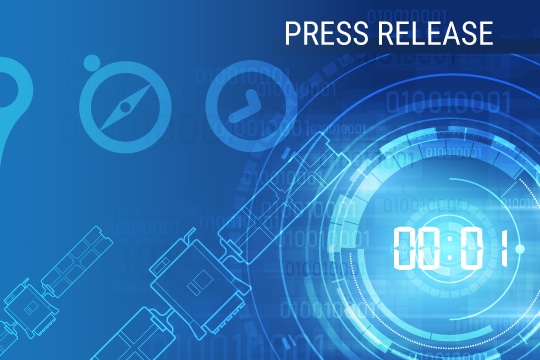# News
Orolia Wins 65M Euros in Atomic Clock Contracts to Keep the Next Generation of Galileo Satellites On Time
The agreement confirms Orolia’s position as the leading atomic clock provider for Global Navigation Satellite Systems
September 8, 2021, Neuchatel, Switzerland – Orolia, the world leader in Resilient Positioning, Navigation and Timing (R-PNT) solutions, has been awarded approximately 65 million euros million in two contracts to provide atomic clocks for the first 12 satellites of the Galileo Second Generation System (G2S). The first was from the European Space Agency (ESAThe European Space Agency is a group of countries in Europe and Canada dedicated to the exploration of space as well as other scientific space missions. As of 2022 there are 22 member states that make up this intergovernmental organization.) and the second from Leonardo. Each of the new G2S satellites, designed to provide unprecedented accuracy worldwide, will contain three Orolia Rubidium Atomic Frequency Standards (RAFSThe Rubidium Atomic Frequency Standard is 10.00 MHz which is a space-qualified frequency standard by which all atomic clocks are measured by. The 10.00 MHz frequency is derived by the spectral absorption line of the Rb87 isotope.) and two Orolia atomic clock physics packages integrated with Leonardo’s Passive Hydrogen Masers (PHMA PHM or Passive Hydrogen Maser is an atomic clock designed to sit onboard space vehichles and satellites which is then used for ultra accurate timekeeping and positioning.).
“We are truly honored to be selected by the European Commission, ESA, and Leonardo to continue to supply our advanced space atomic clocks for the next generation of Galileo. Our dedication, hard work, and innovative design for all the clocks in the current Galileo constellation have contributed to the most accurate GNSSGlobal navigation satellite system (GNSS): A general term describing any satellite constellation that provides positioning, navigation, and timing (PNT) services on a global or regional basis. See also system in service today. We look forward to continuing to support the Galileo program with the most advanced GNSS timing technology available in the world.” said Jean-Yves Courtois, CEO of Orolia.
Orolia’s RAFS is a state-of-the-art ultra-stable rubidium atomic clock able to deliver a frequency stability of about 2×10-14 over averaging intervals of 10,000 seconds. The Leonardo PHM, with its excellent frequency stability performance, is the master clock for the Galileo satellite payload. The maser technology embedded on Galileo offers superior stability to all other types of clocks onboard navigation satellites.
Orolia has delivered more than 140 RAFS Flight Models worldwide, with 114 flying on GNSS constellations. In addition, 77 PHM Flight Models have been delivered worldwide, and 53 are flying on the current Galileo constellation.
According to ESA, the G2S satellites will revolutionize the Galileo constellation, joining the twenty-six first-generation satellites currently in orbit. They will be much larger than the existing Galileo satellites, use electric propulsion for the first time, and feature a more powerful navigation antenna. The G2S constellation should achieve a decimeter-scale positioning precision.
In May, the European Commission and ESA already announced the selection of Orolia to provide its Skydel GNSS signal simulation core engine for the G2S radiofrequency constellation simulator. This series of successes demonstrate the excellence of Orolia’s PNTPosition, Navigation, and Timing: PNT and map data combine to create the GPS service. products and its leadership in the most advanced GNSS technologies.
The Galileo program is managed and funded by the European Union. The European Commission, ESA and EUSPA have signed an agreement by which ESA acts as design authority and system development prime on behalf of the Commission and EUSPA as the exploitation and operation manager of Galileo. The views expressed in this Press Release can in no way be taken to reflect the opinion of the European Union and/or ESA. “Galileo” is registered as a trademark in the database of the European Union Intellectual Property Office (n° 002742237).
Contacts:
Charles Jones (North America)
+1 (585) 450-2889
charles.jones@orolia.com
Sophie Zangs (EMEA & APAC)
+33 (0)6 07 42 39 33
sophie.zangs@orolia.com


